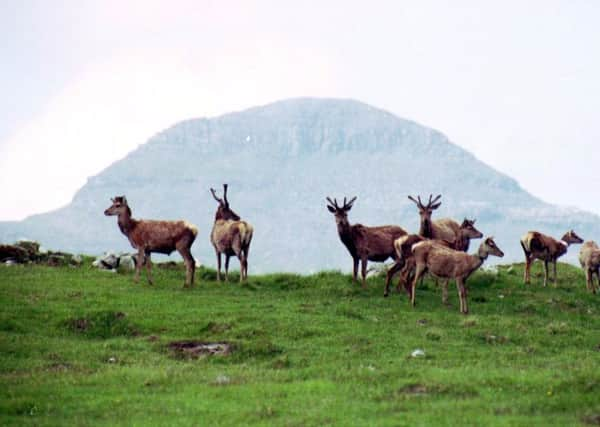Jonny Hughes: We should encourage conservation beyond deer and grouse


Just north of Calvine, the A9 splits into two carriageways with a central reservation in between. The road also steepens at this point as starts its long climb to Dalwhinnie. The greens of Perthshire gradually give way to the purples, yellows and browns of the mountains as the treeless landscape begins to open up in front of you.
But on the central reservation something different is happening. Over decades, native Scots pine, birch and rowan have returned to this slither of land between the roaring traffic. Call it rewilding, call it regeneration, it’s inspiring to see. It shows that, given half a chance, the lost wild wood of Caledon could yet return to Scotland.
Advertisement
Hide AdAdvertisement
Hide AdThe A9 island is thriving thanks to being protected from the two big drivers of land use in our uplands, red deer stalking and grouse moorland management, both of which are currently the subject of reviews by the Scottish Government.
In our now forest-free “deer forests”, deer densities are maintained at high levels so the chances of shooting a stag are higher for those paying to do so. The result is starkly bald hillsides where any tender tree sapling putting its head above the heather is nipped off. In harsh winters, emaciated animals compete for food, often dying at the roadsides or in collisions with vehicles. High densities of deer also exacerbate climate change by eroding peatbogs which release their stored carbon into rivers.
On the grouse moors that cover hundreds of square miles of eastern Scotland, the ecological impacts are even more severe. Here the single land use objective is the maximisation of red grouse numbers for sport shooting. As the latest Birdcrime report shows, the illegal killing of birds of prey in these areas of Scotland is an ongoing problem. Research shows grouse moor management affects the conservation status of at least three species of raptors: hen harriers, golden eagle and peregrine. The fledging success and adult survival rates of all these species is lower on grouse moors than on other moorland.
Quite rightly wildlife crime tends to grab the headlines, but the wider impacts of grouse moor monocultures are equally shocking. Rotational burning to encourage young heather shoots (which grouse like to eat) destroys the natural ecology of our uplands, incinerates young trees and pumps huge quantities of carbon pollution into the atmosphere.
Many environmentalists would like to see the return of nature we are witnessing on the A9 island across the whole of the uplands. They are calling for a ban of grouse shooting which, they claim, allows wealthy folk to destroy public commons in pursuit of a private hobby.
One thing for is sure, we can’t carry on like this. If we have any chance of making Scotland a “net zero” carbon nation, we need to stop the abuse of our uplands.
Firstly we urgently need to better regulate deer management to heal our landscapes to after centuries of overgrazing. Second, we need to get a grip on intensive grouse moor management, granting licences to those who run their operations responsibly and removing them from those who persecute wildlife and erode Scotland’s precious natural capital.
• Jonny Hughes is chief executive of the Scottish Wildlife Trust
This article is dedicated to the memory of Simon Pepper, one of Scotland’s great environmental champions, who died suddenly earlier this month.